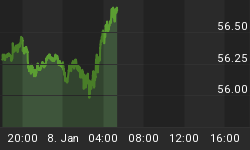In recent decades we have heard so many highly ambitious space-related plans, including several attempts to conquer the moon and lunar space. Now, billionaire Jeff Bezos, the richest man on this planet, says he has found the winning combination for the future colonization of space. Colonizing space is story that is decades old, even for Bezos. He’s been obsessed with the idea since he was 5 years old. And so far that has culminated in his space venture, Blue Origin.
Now he’s lifting the veil, so to speak, on his plans for humanity’s “comeback”--on the moon.
Bezos has a long-term goal of seeing millions of people living and working in space. He believes that a trillion people could feasibly live in "self-sustaining habitats" in space.
"Living in those space colonies would be as easy and temperate as living in Hawaii. This is Maui on its best day, all year long. No rain. No earthquakes. People are going to want to live here," Bezos said during a presentation of his vision.
The long-range vision is based on and inspired by the theory for huge artificial habitats. The father of this concept is physicist Gerard O’Neill, who laid it all out in 1976 in his work entitled “The High Frontier.”
In short, the basic idea is to create cylinder-shaped structures in outer space and give them enough of a spin that residents on the inner surface of the cylinder could live their lives in Earth-style gravity. It’s the “O'Neill cylinder”.
Related: Fake News Sinks Shares In UK-Based Bank
"This is going to take a long time, this is a big vision. The price of admission to do interesting things in space right now is just too high. And they (human colonies) can be close to Earth so that you can return. Which is important, because people are going to want to return to Earth. They’re not going to want to leave Earth forever. They’re also going to be able to go between,” Bezos said.
According to the dreamer-billionaire, traveling between different space colonies would be as simple as taking “a day trip”.
Of course, there still quite a bit of distance between the dream and reality here--and money makes up a fair share of that ‘distance’.
In this context, Bezos is rich enough to make sure that research continues and to keep working on the development of his spacecraft.
He also took the opportunity to detail some of the main features of his Blue Moon lander, which he says will be capable of autonomously navigating in space and soft landing between 3.6 and 6.5 metric tons of payload on the surface of the Moon. It’s also “capable of carrying up to four large rovers simultaneously, or an ‘ascent stage’, which can take off from the lander and eventually carry people away from the surface of the Moon”, he said.
The idea of unlimited resources, such as solar energy, also play a big role in Bezos’ space vision. But there are plenty of dissenting voices, including some experts who believe we could eventually exhaust the solar system’s resources because of our limited ability to see ahead.
But as the Romans say, Alea aicta est ("The die is cast"), and when it comes to space, we've already reached the point of no return, with Bezos determined to be the new father of our cosmic future.
By Michael Kern for Safehaven.com
More Top Reads From Safehaven.com:

















